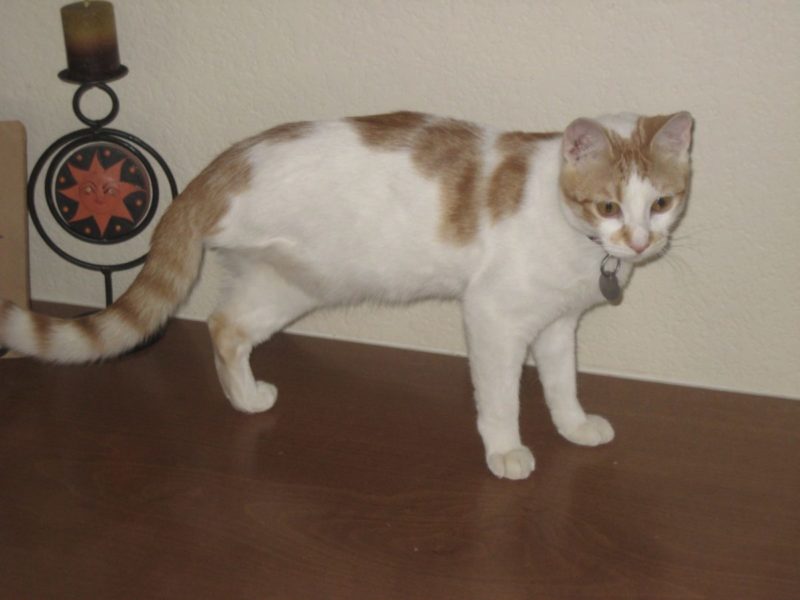When you watch a cat perform amazing feats of athleticism—climbing to the top of a tree, jumping straight from the ground to a high place, and running so fast she becomes just a blur—it’s hard to imagine life could be good for a cat with only three legs. But the truth is that tripod kitties can be as happy and fulfilled as their four-legged brethren with the right kind of care.
My 10-year-old orange-and-white patched tabby Erma was born with all four legs but lost a hind leg as a kitten. The family who had her previously didn’t realize she had broken her leg, and by the time they took her to the vet, the leg had become irreparable. At age 20 weeks, Erma’s hind leg had to be amputated.
Once Erma recovered from her surgery, she had to learn to navigate life on three legs. She helped me learn some important lessons about tripod kitties.
Can-Do Cats
Tripods can run. Even though walking may look difficult, you may be surprised to see how well a three-legged cat can run. Walking is harder because it’s a four-beat gait, meaning that each leg hits the ground individually. But cantering—a bit slower than a gallop—is a three-beat gait, which means your three-legged cat doesn’t need to rely on four legs to build up speed.
Tripods can climb. While it’s easier for a tripod with both front legs to climb, a skilled three-legged cat with a missing foreleg can also pull herself up. Erma dashes up our sisal-covered cat tree with the same speed as our four-legged cats. The fact that she’s missing a back leg seems to have no effect.
Tripods can leap. A cat missing a back leg may have trouble jumping from the ground to a high surface, but that doesn’t mean she can’t leap from one level surface to another. Erma regularly jumps from our coffee table to our couch without any problem. Leaping is even easier for a cat missing a front leg.
Tripods can jump. Cats missing a front leg often have no problem jumping to high surfaces. I’ve seen one tripod Bengal jump a good six feet from the ground onto a solid surface. It can be more challenging for a cat missing a hind leg to jump high, however, because cats use their back legs to propel them upward.
Although three-legged cats can do most things four-legged cats can do, they may need assistance in some areas.
Give A Helping Hand
Provide a lift. If your cat is missing a back leg, it’s likely she will need help getting from the floor to a higher surface. If you want your tripod cat to be able to jump from the floor to your coffee table or from the floor onto your lap, you may just have to pick her up if she can’t do it on her own. Or you can set up objects in ascending height that will allow her to gradually make her way up to the top. (Cats missing a front leg may not need this kind of assistance unless they are trying to make a very high jump.)
Give scratches. If your cat is missing a hind leg, she won’t be able to scratch her ear or neck on that side of her body when it gets itchy. You may see her trying to scratch with her phantom leg. Pitch in by scratching the itchy spot for her.
Keep indoors. It goes without saying that a tripod kitty should always be kept indoors (or supervised if allowed outside for short periods of time). Although three-legged cats are very good at adapting to their handicap, they are still at a disadvantage when dealing with the dangers that face outdoor cats. Cat-chasing dogs, speeding cars, and hungry coyotes are just a few of the hazards that could prove fatal to a tripod cat who goes outside.
Remember that your tripod kitty will need time to adjust to her new life with only three legs, especially if she was full grown when her leg was amputated. Once she has had time getting used to balancing and moving around on only three legs, you’ll be amazed at how well she will manage, with only a little help from her friends.
This article was reviewed/edited by board-certified veterinary behaviorist Dr. Kenneth Martin and/or veterinary technician specialist in behavior Debbie Martin, LVT.








